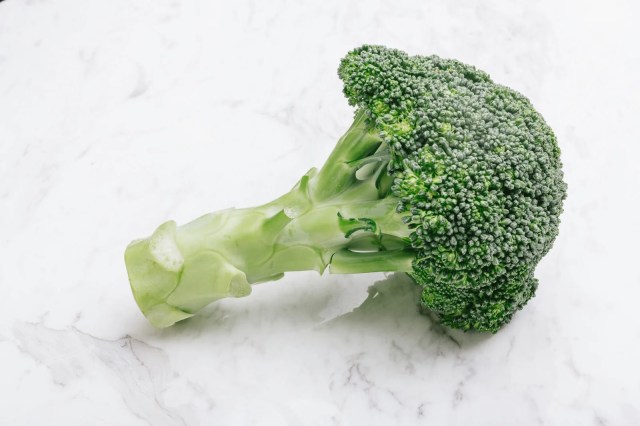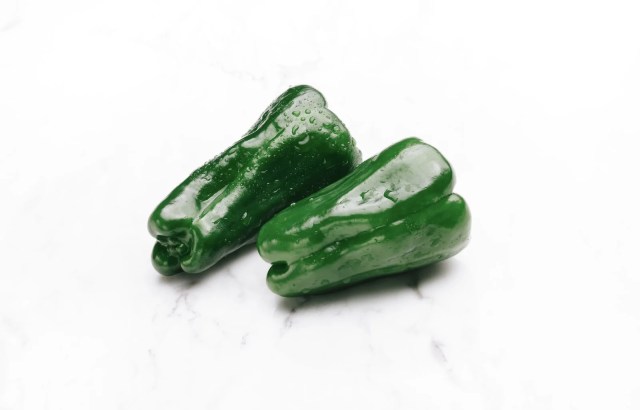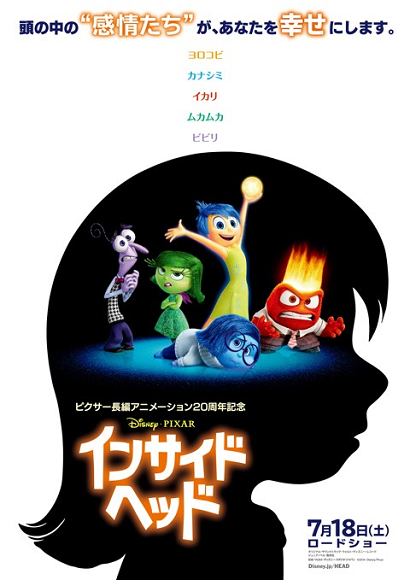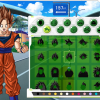If you’re an anime purist, you’ve probably watched at least one title with a localization choice that rubbed you the wrong way. Maybe you were irked by Sailor Moon’s Usagi being called “meatball head” on American T.V. instead of “dango/dumpling head.” More recently, you might have wondered why Doraemon’s central family ditched all their chopsticks and now eat their Japanese food with forks in their U.S. appearances.
But localization runs in the other direction, too, and it’s just come to light that Pixar has altered part of the artwork in several scenes of Inside Out solely for the film’s Japanese release.
Let’s try a little experiment. What comes to mind when you hear the word “rice omelet?” Before coming to Japan, I would have thought, “That sounds like about the cheapest, least satisfying meal you could make, and is surely something only eaten by the poorest or laziest college students.” In Japan, though, rice omelets (which are actually made from more than just rice and eggs) are a favorite of kids across the country, and often bring up happy memories of Mom’s delicious home-cooking. Ditto for curry, which for many in Japan is as evocative of their childhood home as it is of India.
In other words, culinary connotations differ between nations, and so Disney and Pixar were a little worried about all the scenes in Inside Out where its protagonist, 11-year-old Riley, is faced with the difficult challenge of having to eat a plate of broccoli. To just about any American moviegoer, “broccoli” is effective shorthand for “vegetable widely hated by kids,” but in Japan, the healthy foodstuff doesn’t really have that same image.
▼ ”What’s the big deal?” – Japan
It’s not that Japanese kids are all about eating their vegetables, but rather that broccoli isn’t nearly as prevalent in home-made meals as it is in the U.S., and so it’s not a symbol of being pressured by your parents and having only limited control over your own life. So in order to get the same, instantly recognizable frame of reference for Japanese audiences, Inside Out’s producers looked into what Japanese kids do hate being served by their parents, and what they found was…
▼ ”Uhh, can we have that broccoli back?”
…green peppers, called piman in Japanese.
Pixar could have just switched every mention of “broccoli” in the dialogue to “piman” and called it a day, but instead, the studio went back and changed all images of the former to the latter. This was no minor task, given the number of scenes in which broccoli can be seen in the original version. Still, producers felt it was the right thing to do, and a Disney rep says the decision was made in order to help Japanese audiences better relate to and enjoy the film.
Like many films with kids in their target market, Inside Out is being theatrically released in Japan in both Japanese-dubbed and subtitled formats. The change from broccoli to peppers is only present in the dubbed version, which also contains altered signs, newspapers, and other bits of text where Japanese replaces English. The subtitled version’s visuals, meanwhile, are identical to the original version.
If you’re the suspicious type, you could argue that the discrepancies between the two versions are a savvy ploy designed to get fans to watch the movie twice, and thus buy two tickets, in order to get the complete experience. The switch to peppers does make sense from a storytelling standpoint, though, and even as it brushes aside a chance for Japanese audiences to learn a little bit about other cultures, it’s not hard to see why Inside Out’s producers went the way they did.
Now, if someone could explain whose idea it was to change the movie’s title to Inside Head in Japan…
Source: Cinema Today
Top image: Disney (edited by RocketNews24)
Insert images: Pakutaso (1, 2), Disney (edited by RocketNews24)




 Personified emotions from Pixar’s “Inside Out” get nifty kanji makeover in Japanese posters!
Personified emotions from Pixar’s “Inside Out” get nifty kanji makeover in Japanese posters! Disney Pixar’s new movie attracts criticism again in Japan
Disney Pixar’s new movie attracts criticism again in Japan Toy Story’s Little Green Men arrive at Tokyo Disneyland in edible form, plus other new sweets
Toy Story’s Little Green Men arrive at Tokyo Disneyland in edible form, plus other new sweets Toy Story-themed camper vans are a fan’s dream, so limited-edition there’s a lottery to buy them
Toy Story-themed camper vans are a fan’s dream, so limited-edition there’s a lottery to buy them Disney selling ultra-premium backpacks for Japanese schoolkids exclusively inside its Tokyo parks
Disney selling ultra-premium backpacks for Japanese schoolkids exclusively inside its Tokyo parks Beautiful Starbucks in Kyoto blends into its traditional landscape in more ways than one
Beautiful Starbucks in Kyoto blends into its traditional landscape in more ways than one 26 Amazing Things About Japanese Budget Hotels
26 Amazing Things About Japanese Budget Hotels We found possibly the quietest Japanese-style hotel in Tokyo’s bustling Shinjuku district
We found possibly the quietest Japanese-style hotel in Tokyo’s bustling Shinjuku district Starbucks Japan unveils new Sakura Frappuccino for cherry blossom season 2025
Starbucks Japan unveils new Sakura Frappuccino for cherry blossom season 2025 Can we pick out the Japanese premium priced persimmon in this blind taste test?
Can we pick out the Japanese premium priced persimmon in this blind taste test? Awesome website allows you to make your own Dragon Ball character, battle other fighters
Awesome website allows you to make your own Dragon Ball character, battle other fighters A Japanese dating app matched our bachelorette with a Buddhist monk, and she learned some things
A Japanese dating app matched our bachelorette with a Buddhist monk, and she learned some things One of Japan’s rarest sweets is a sell-out hit that looks and tastes like frost
One of Japan’s rarest sweets is a sell-out hit that looks and tastes like frost Harajuku’s new permanent Tamagotchi shop is filled with cuteness and a surprising lack of poop
Harajuku’s new permanent Tamagotchi shop is filled with cuteness and a surprising lack of poop Tour a stylish, minimalistic Muji House in new downtown Tokyo showroom
Tour a stylish, minimalistic Muji House in new downtown Tokyo showroom Starbucks Japan ready to get Year of the Horse started with adorable drinkware and plushies【Pics】
Starbucks Japan ready to get Year of the Horse started with adorable drinkware and plushies【Pics】 7-Eleven Japan’s ramen-cooking robot whipped us up a bowl of noodles【Taste test】
7-Eleven Japan’s ramen-cooking robot whipped us up a bowl of noodles【Taste test】 Cyberpunk anime meets traditional culture in Ghost in the Shell gold leaf Japanese changing screens
Cyberpunk anime meets traditional culture in Ghost in the Shell gold leaf Japanese changing screens 7 great places to see Mt. Fuji from without having to climb it
7 great places to see Mt. Fuji from without having to climb it Hello Kitty Choco Egg figures are an adorable trip through three periods of Japanese pop culture【Pics】
Hello Kitty Choco Egg figures are an adorable trip through three periods of Japanese pop culture【Pics】 Japan’s otoshidama tradition of giving kids money at New Year’s gets a social welfare upgrade
Japan’s otoshidama tradition of giving kids money at New Year’s gets a social welfare upgrade Lacquerware supplier to emperor of Japan and Pokémon team up for new tableware
Lacquerware supplier to emperor of Japan and Pokémon team up for new tableware Sumo Sanrio! Hello Kitty and pals team up with Japan Sumo Association for new merch【Pics】
Sumo Sanrio! Hello Kitty and pals team up with Japan Sumo Association for new merch【Pics】 Can a dirty butthole make you filthy rich in Japan? We’re starting a New Year’s lottery experiment
Can a dirty butthole make you filthy rich in Japan? We’re starting a New Year’s lottery experiment 7-Eleven Japan starts new temporary luggage storage service in over 300 branches
7-Eleven Japan starts new temporary luggage storage service in over 300 branches Disillusionment at Tsukiji’s tourist-target prices led us to a great ramen restaurant in Tokyo
Disillusionment at Tsukiji’s tourist-target prices led us to a great ramen restaurant in Tokyo Starbucks teams up with 166-year-old Kyoto doll maker for Year of the Horse decorations【Photos】
Starbucks teams up with 166-year-old Kyoto doll maker for Year of the Horse decorations【Photos】 Tokyo considering law requiring more trash cans following litter increase in heavily touristed area
Tokyo considering law requiring more trash cans following litter increase in heavily touristed area Tokyo’s Tsukiji sushi neighborhood asks tour groups to stay away for the rest of the month
Tokyo’s Tsukiji sushi neighborhood asks tour groups to stay away for the rest of the month Nintendo’s Kirby now delivering orders at Kura Sushi restaurants, but not in Japan
Nintendo’s Kirby now delivering orders at Kura Sushi restaurants, but not in Japan Tokyo event lets you travel back in time, for free, to celebrate 100 years since Showa era start
Tokyo event lets you travel back in time, for free, to celebrate 100 years since Showa era start Sanrio theme park in Japan announces plans to expand into a Sanrio resort
Sanrio theme park in Japan announces plans to expand into a Sanrio resort Japan may add Japanese language proficiency, lifestyle classes to permanent foreign resident requirements
Japan may add Japanese language proficiency, lifestyle classes to permanent foreign resident requirements Survey asks foreign tourists what bothered them in Japan, more than half gave same answer
Survey asks foreign tourists what bothered them in Japan, more than half gave same answer Japan’s human washing machines will go on sale to general public, demos to be held in Tokyo
Japan’s human washing machines will go on sale to general public, demos to be held in Tokyo Japan’s deadliest food claims more victims, but why do people keep eating it for New Year’s?
Japan’s deadliest food claims more victims, but why do people keep eating it for New Year’s? We deeply regret going into this tunnel on our walk in the mountains of Japan
We deeply regret going into this tunnel on our walk in the mountains of Japan Studio Ghibli releases Kodama forest spirits from Princess Mononoke to light up your home
Studio Ghibli releases Kodama forest spirits from Princess Mononoke to light up your home Major Japanese hotel chain says reservations via overseas booking sites may not be valid
Major Japanese hotel chain says reservations via overseas booking sites may not be valid Put sesame oil in your coffee? Japanese maker says it’s the best way to start your day【Taste test】
Put sesame oil in your coffee? Japanese maker says it’s the best way to start your day【Taste test】 No more using real katana for tourism activities, Japan’s National Police Agency says
No more using real katana for tourism activities, Japan’s National Police Agency says Starbucks Japan reveals new sakura drinkware collection, inspired by evening cherry blossoms
Starbucks Japan reveals new sakura drinkware collection, inspired by evening cherry blossoms Updated cherry blossom forecast shows extra-long sakura season for Japan this year
Updated cherry blossom forecast shows extra-long sakura season for Japan this year Disney’s Japanese breakfast in Hawaii probably tastes great, still looks weird
Disney’s Japanese breakfast in Hawaii probably tastes great, still looks weird Anna and Elsa ready to visit homes in January with Frozen New Year’s osechi meals
Anna and Elsa ready to visit homes in January with Frozen New Year’s osechi meals A talk with the man who helped bring Studio Ghibli to the west, Steve Alpert【Interview】
A talk with the man who helped bring Studio Ghibli to the west, Steve Alpert【Interview】 25 different Japanese convenience store sandwiches – What’s inside them?【Photos】
25 different Japanese convenience store sandwiches – What’s inside them?【Photos】 28 things that surprised SoraNews24’s Japanese founder on his trip to San Diego
28 things that surprised SoraNews24’s Japanese founder on his trip to San Diego
Leave a Reply